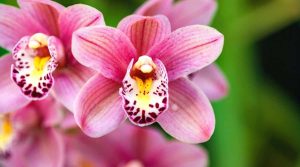Orchids, those mesmerizing blooms that captivate with their aerial roots and exotic allure, might seem like a challenge to grow, but fear not! With a few straightforward tips, you can transform your home into a thriving orchid oasis. Let’s dive into the essentials of orchid care and uncover how you can keep these enchanting plants happy and blooming. You can get the best guide on www.martine-orchids-garden.com.

First things first, lighting is crucial. Orchids adore light—though not too direct, as harsh sun can scorch their delicate petals. A bright, indirectly lit spot simulates the dappled sunlight of their natural habitat. East or west-facing windows are typically ideal for these photophilic beauties. If natural light is limited in your space, consider using grow lights. These artificial sources can wonderfully mimic the spectrum of sunlight necessary for orchid growth.
When it comes to watering, think ‘Goldilocks’: not too much, not too little, just right. Overwatering is the fast track to an unhappy orchid by leading to root rot—a common pitfall for many enthusiastic plant parents. The frequency of watering depends largely on your environment’s humidity and temperature as well as the type of orchid. A good rule of thumb is to water once a week during warmer months and reduce to every other week when it’s cooler. Feel the top inch of soil; if it’s dry, it’s time for a drink.
Humidity plays a pivotal role in keeping your orchid at its best. These plants thrive in about 60-70% humidity which is higher than what most homes naturally offer. To increase moisture around your plants without creating a mini rainforest in your living room, use a humidity tray filled with pebbles and water or invest in a small humidifier.
The right potting mix will also support healthy growth by providing adequate air circulation around the roots—a must for orchids since they detest being waterlogged! Commercially available orchid mixes usually contain bark or moss which does an excellent job at this task.
Feeding your orchids should be done with care and consistency using fertilizers formulated specifically for them; these typically have higher levels of nitrogen which helps promote vibrant blooms and sturdy growth. Feed lightly every other week during active growth periods (usually spring through fall) and pull back during dormant times (typically winter).
Repotting is another aspect that can seem intimidating but is quite manageable once you know what signs to look out for—like roots pushing out of the container or media breaking down—and doing so every couple of years keeps your plant robust by giving fresh nutrients and space needed for expansion.
Pruning isn’t just about aesthetics; it’s vital for plant health too! After blooming has finished, prune dead stems to encourage new growth. This also helps prevent disease from taking hold.
Lastly, watch out for pests such as aphids or spider mites which love making meals out of stressed plants. Keep an eye on leaf health—any stickiness or discoloration could indicate unwanted guests! Treat infestations promptly with insecticidal soap or neem oil while avoiding harsh chemicals that could damage sensitive orchid tissues.
Growing orchids might initially seem like walking through uncharted territory filled with potential missteps but remember: each bloom that appears is a sweet reward marking your success as an indoor gardener! So keep these tips handy, show some patience and affection towards your floral friends, and soon enough you’ll find yourself mastering the artful dance of orchid care.